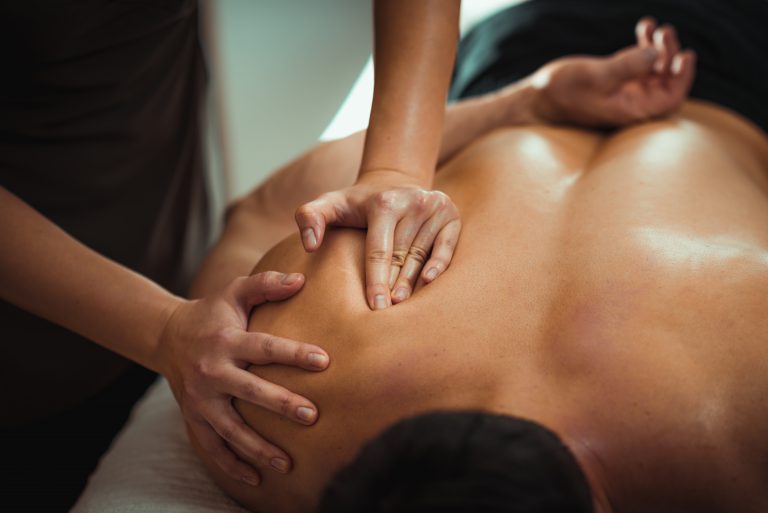Medical Massage Therapy

Massage therapy allows deep work on pressure points and sensitive areas which encourages the release of these blockages, improves blood circulation, improves range of motion and flexibility, and significantly reduces regional or local pain.
Our body is an amazing machine, but sometimes energy blockages are created in it, due to improper use or as a result of physical or emotional harm. As a result of these blockages, the fascia, which covers the inner part of organs, muscles, nerves and blood vessels, tends to stick and pressure points are created (also called trigger points) that disrupt the supply of oxygen, vitamins, toxins and waste removal. In these places a feeling of pain may form.
The treatment is suitable for a variety of problems such as chronic muscle pain or as a result of injury or strenuous training, strengthening and flexibility of the muscle, pain resulting from various physiological problems, muscle or tendon infections, problems and limitations in movement and mental stress. This type of treatment allows for a reduction in pressure and a significant reduction in pain from the first treatment and puts the body in a state of self-healing work.
History
Massage is an ancient tool that has been recognized in Chinese medicine for over 5000 years. Over the last few centuries, therapy has made a leap into Western consciousness by scientists such as Professor Weir Mitcher, a neurologist from the United States, and Douglas Graham, a physician from Boston, the United States, Dr. Harvey Kellogg and more. Progress moved massage therapy to the forefront and he began to appear in the medical literature and be included in the curriculum of higher education institutions. It later became an accepted treatment method suitable for working with adults and children in a variety of problems such as pain, work and sports injuries, chronic problems and more.
Pressure Points / Trigger Points (TrPs)
By medical definition, a pressure point is a point where pain is felt within the muscle or radiation of pain in the area. The spot is formed as a result of microscopic changes in the muscle fibers in the pain area that causes the muscle fibers to shorten and be in a contracted state. Sensitivity is expressed in sending nerve messages that are received by the nervous system, which are translated in the body into a feeling of pain. The pain can manifest itself in radiation to the area around the point, as point pain in the point itself, in a general feeling of muscle contraction and limitation in movement, discomfort and a feeling of heaviness, burning or paresthesia.
The reasons for this kind of muscle behavior can be strenuous physical work, stress or mental strain, improper work, chronic physical problem, accident or injury, lack of rest or sleep and more. In some people the stress and pain pass after a few days or weeks and the area recovers with a full return to function. In others the pain can remain for a long time without change or even aggravate the condition without proper treatment.
Leaving the situation unchanged for a long period of time weakens the muscle both in the day-to-day ability to work and in the effect of training of any kind. The contracted muscle loses its flexibility, causes a feeling of stiffness and causes the muscle to shorten in general. In addition, a dysfunctional muscle impairs the stability of the body and the respiratory sequence.
Possible treatments for trigger points:
1. Sports activities:
Stretching is an effective tool used as a preventative treatment and especially relieves
chronic problems. The same is true for proportionate sports activities such as long walks
or jogging, due to increased heart function in activities rather than muscle stretching that
encourages blood circulation and self-healing of the area. Yoga helps a lot in stretching
and lengthening the muscles.
2. Medical massage:
Massage of these trigger points and the adjacent areas in the various pain pathways
combined with applied pressures on the points themselves encourage blood flow to these
areas and provide physical release and self-healing of the area.
3. Western Acupuncture:
Performing Western Acupuncture at these points and adjacent areas stimulates the
muscle and the entire area to an enhanced state of healing by increasing blood flow in the
treated area and greatly improving the level of pain and range of motion.
4. Medicinal Herbs:
Using medicinal herbs to reduce pain and inflammation that forms around the these
points.
How the treatment is performed
Every treatment is suited to the patient’s needs according to the problem he presents and according to the diagnosis of the therapist of his body condition. The treatment is performed lying on a treatment bed in a tummy, back or abdominal side position as required. A variety of techniques will be applied such as deep tissue massage, stretching and moving muscles and joints, kneading and deep pressing on trigger points. The treatment focuses on one area and does not work on the whole body.
During the treatment the patient’s body is almost completely covered with a sheet except for areas that will be exposed for the treatment. Sometimes different oils are used for a more pleasant feeling on the skin but they are not necessary.
